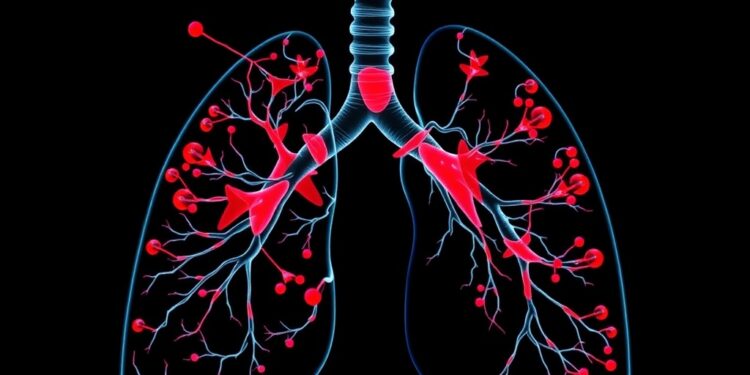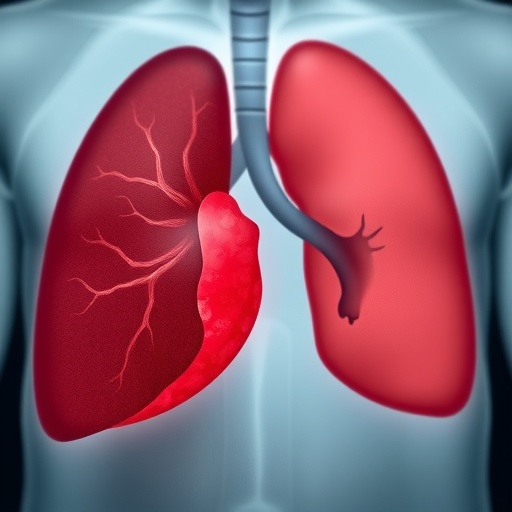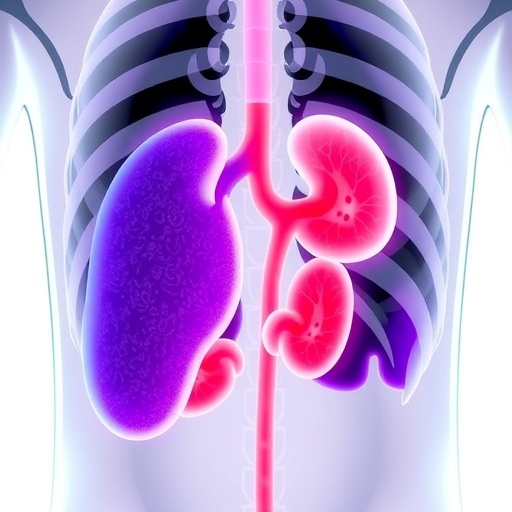The fight against lung cancer, the leading cause of cancer-related deaths worldwide, has taken a transformative leap forward with the validation of ORACLE, a clonal expression biomarker poised to redefine prognostic precision in lung adenocarcinoma (LUAD). As a disease notorious for its genetic and transcriptomic diversity, LUAD presents formidable challenges in accurate prognostication and treatment selection. However, this newly validated biomarker addresses the longstanding issue of intratumor heterogeneity (ITH), offering hope for better survival outcomes and tailored therapeutic strategies.
The ORACLE (Outcome Risk Associated Clonal Lung Expression) biomarker emerged from extensive multiregion whole-exome and RNA sequencing analyses conducted within the TRACERx study. This landmark research spanned 450 tumor regions from 184 patients with LUAD, meticulously characterizing clonal transcriptional signatures. These signatures overcome the inherent sampling bias that plagues traditional single-site biopsies. By identifying uniformly expressed (clonal) genes, ORACLE offers a robust and reproducible method for risk stratification based on molecular fingerprints rather than spatially confined snapshots of tumor biology.
The importance of addressing ITH cannot be overstated. Conventional prognostic biomarkers in LUAD have historically struggled with variability introduced by heterogeneous tumor sampling. This variability undermines the accuracy of risk predictions and the reproducibility of findings across independent cohorts. ORACLE’s validation resolves this bottleneck by demonstrating concordant classification across tumor regions, with a discordant risk classification observed in only 19% of cases. This is a significant improvement over other RNA-seq-based signatures, which show discordant rates ranging from 25% to 44%.
The prospective validation of ORACLE underscores its clinical utility. In a cohort of 158 patients with stage I–III LUAD, ORACLE demonstrated a clear and independent association with overall survival (OS). Hazard ratios (HRs) for high-risk versus low-risk classifications confirmed its prognostic power, even after adjusting for clinicopathological factors such as sex, age, smoking history, and tumor stage. In simulations mimicking real-world clinical scenarios, where single-site biopsies are the norm, ORACLE consistently maintained its predictive accuracy. This stability makes it a practical tool for integration into routine diagnostic workflows.
One of ORACLE’s most compelling applications lies in stage I LUAD, where prognostic clarity is urgently needed. Patients with stage I disease often undergo surgical resection with curative intent, yet 15% succumb to the disease within five years. The increasing prevalence of stage I diagnoses, driven by advances in computed tomography (CT) screening, amplifies the need for precise risk stratification. ORACLE’s ability to outperform traditional tumor-node-metastasis (TNM) staging criteria in predicting survival highlights its potential to guide decisions regarding adjuvant therapy. In the TRACERx validation cohort, ORACLE’s risk stratification revealed significant survival differences within stage I subgroups, with a five-year survival rate of 70% for low-risk patients versus 36% for high-risk patients who did not receive adjuvant therapy.
Mechanistic insights into ORACLE further enhance its relevance. The biomarker delineates clonal transcriptional changes detectable at early stages of tumor development, including preinvasive lesions. By tracking these changes from normal tissue to metastasis, ORACLE identifies molecular fingerprints of lethal metastatic clones. This capability is exemplified in its ability to differentiate metastasis-seeding primary tumor regions from non-seeding regions, offering a window into early systemic dissemination. Furthermore, ORACLE’s association with chromosomal instability and complexity sheds light on its predictive capacity for chemotherapy sensitivity. High-risk LUAD tumors identified by ORACLE were found to be particularly responsive to platinum-based chemotherapy, such as cisplatin, supporting its utility in tailoring therapeutic interventions.
ORACLE’s role as a summary metric of lung cancer evolution is another landmark achievement. By correlating with genetic features such as somatic copy-number alteration (SCNA) heterogeneity, clonal driver mutations, and chromosomal complexity, ORACLE integrates molecular evolution into a concise 23-transcript assay. This assay not only simplifies the assessment of evolutionary dynamics but also complements other biomarkers, including circulating tumor DNA (ctDNA) and pathological markers like spread through airway spaces (STAS). Together, these markers provide a multidimensional view of tumor behavior and prognostic outcomes.
The clinical implications of ORACLE extend beyond prognostication. Its predictive capabilities for chemotherapy response could inform future clinical trials aimed at refining adjuvant therapy decisions. Similar to breast cancer studies that have successfully utilized RNA markers to guide treatment, ORACLE could pave the way for precision diagnostics in lung cancer. A randomized phase III trial comparing observation versus chemotherapy for ORACLE high-risk patients could establish its role in reducing overtreatment while optimizing outcomes for high-risk cases.
As a solution to the pervasive challenge of sampling bias, ORACLE exemplifies the potential of clonal expression biomarkers in cancer diagnostics. Its design accommodates the practical limitations of clinical workflows, relying on single-site needle biopsies while maintaining prognostic integrity. Future research may extend the utility of this approach to other cancer types, as initial studies suggest its applicability across diverse malignancies. Additionally, ORACLE’s framework could inspire the development of clonal biomarkers to predict immune checkpoint blockade efficacy, further broadening its impact on cancer treatment.
While ORACLE represents a significant leap forward, it is essential to acknowledge the complexities of cancer biology that remain beyond its reach. Certain tumors with low-penetrance subclones may require advanced sampling strategies, including multiregion or single-cell analyses, to capture the full spectrum of tumor behavior. Nevertheless, ORACLE’s pragmatic design and robust validation mark a turning point in lung cancer prognostication, offering a scalable and impactful tool to improve patient outcomes.
In conclusion, the validation of ORACLE underscores the transformative potential of integrating evolutionary biology principles into cancer diagnostics. By addressing intratumor heterogeneity and refining risk stratification, ORACLE sets a new standard for precision medicine in LUAD. As clinical trials and technological advancements continue to refine its application, ORACLE is poised to reshape the landscape of lung cancer care, offering hope for improved survival and personalized treatment strategies.
Subject of Research: Lung adenocarcinoma (LUAD)
Article Title: Prospective validation of ORACLE, a clonal expression biomarker associated with survival of patients with lung adenocarcinoma
News Publication Date: 09 January 2025
Article Doi References: DOI: [Insert DOI Here, if known]
Image Credits: Created with BioRender.com (if applicable)
Keywords: Lung adenocarcinoma, ORACLE biomarker, clonal expression, prognostic biomarkers, intratumor heterogeneity, lung cancer evolution, precision medicine, chemotherapy sensitivity, TRACERx study.





